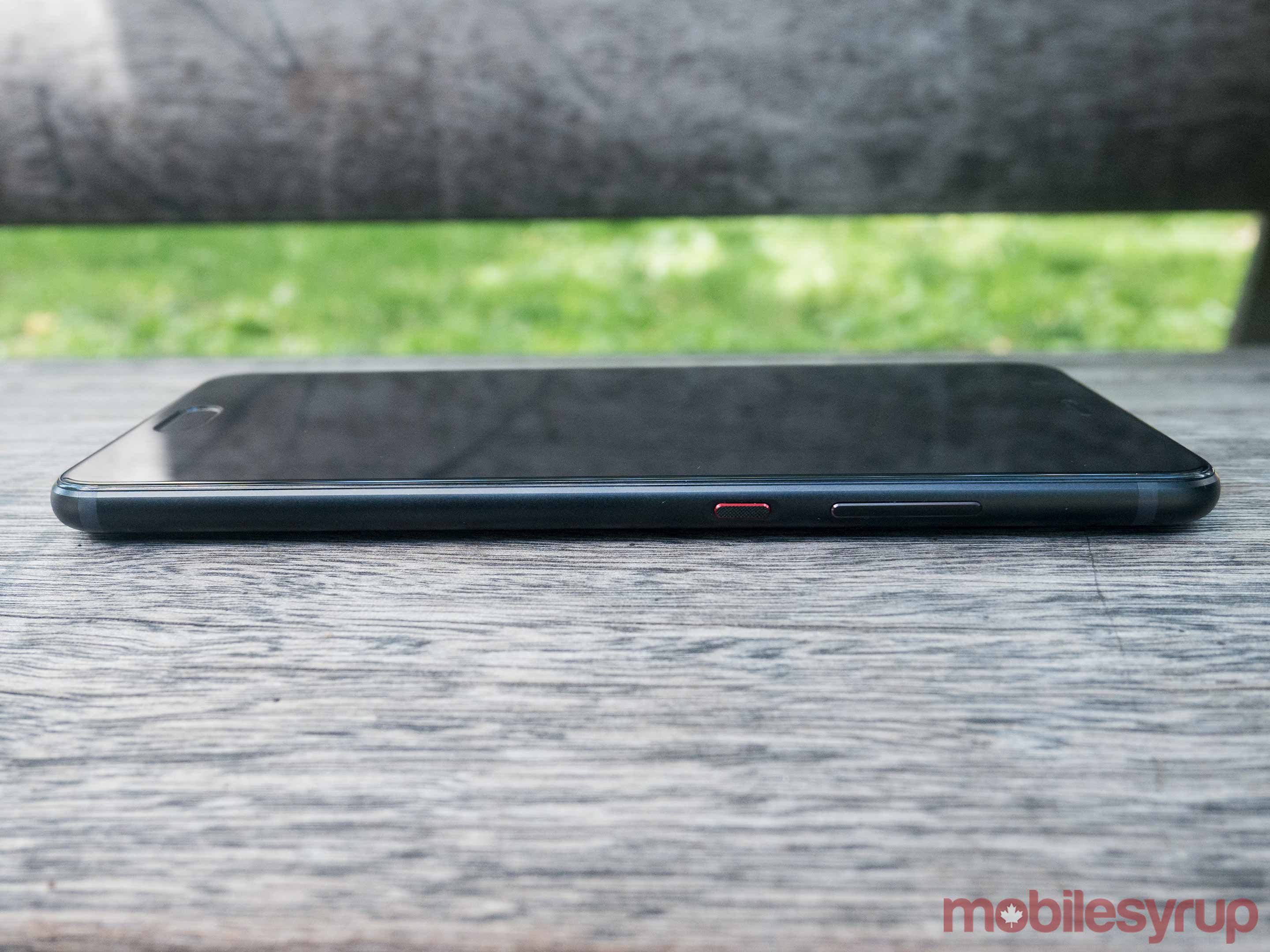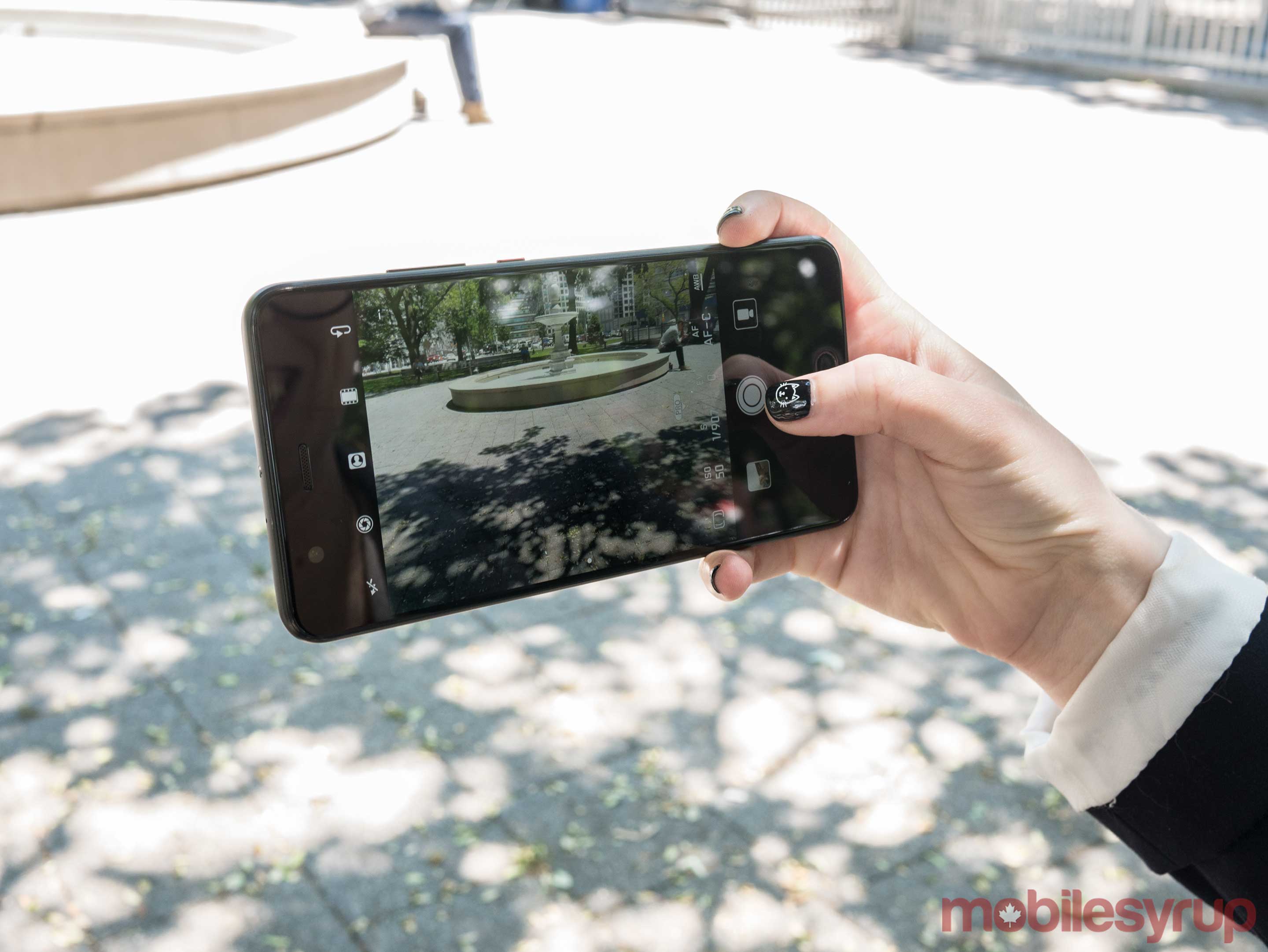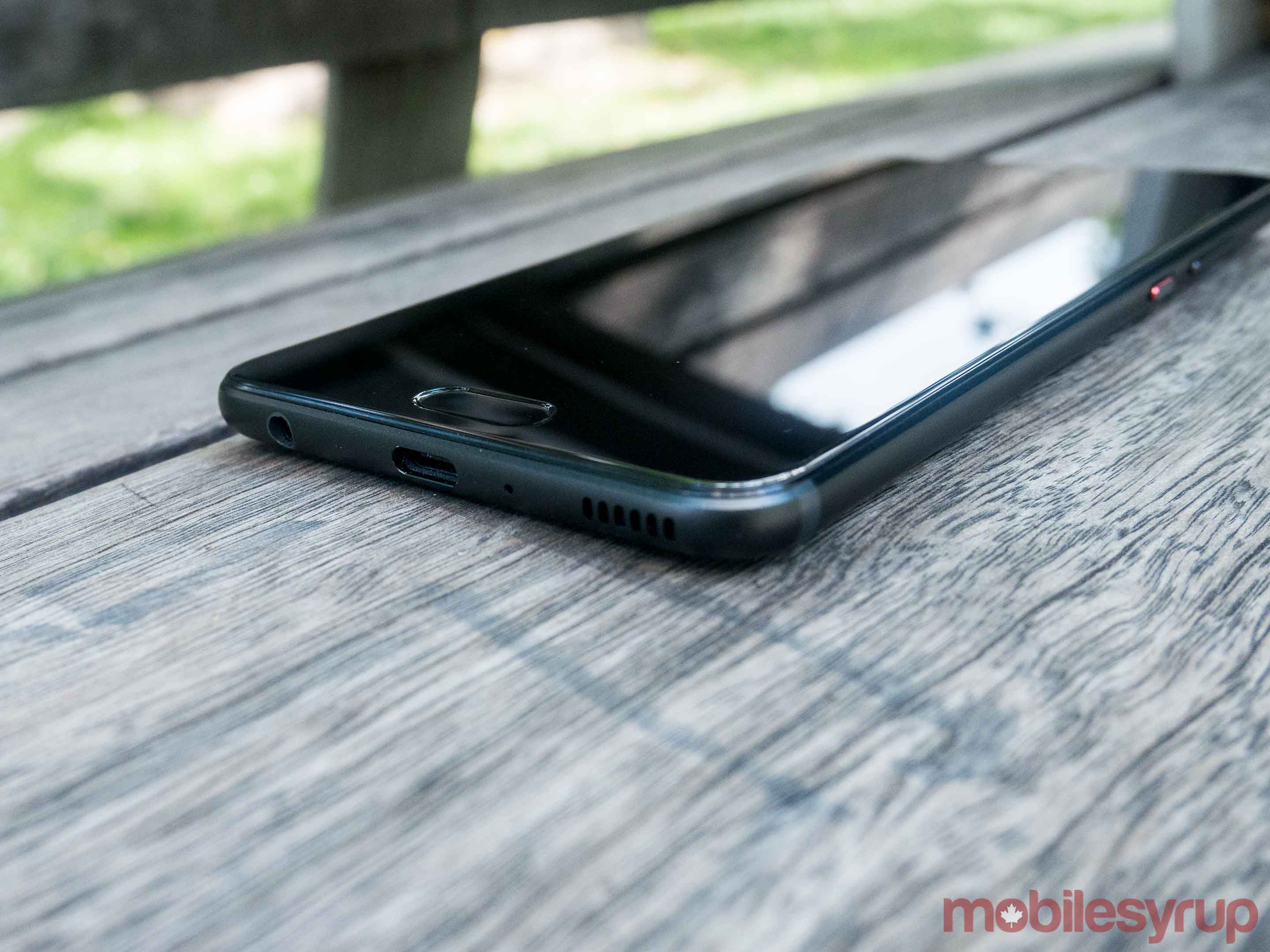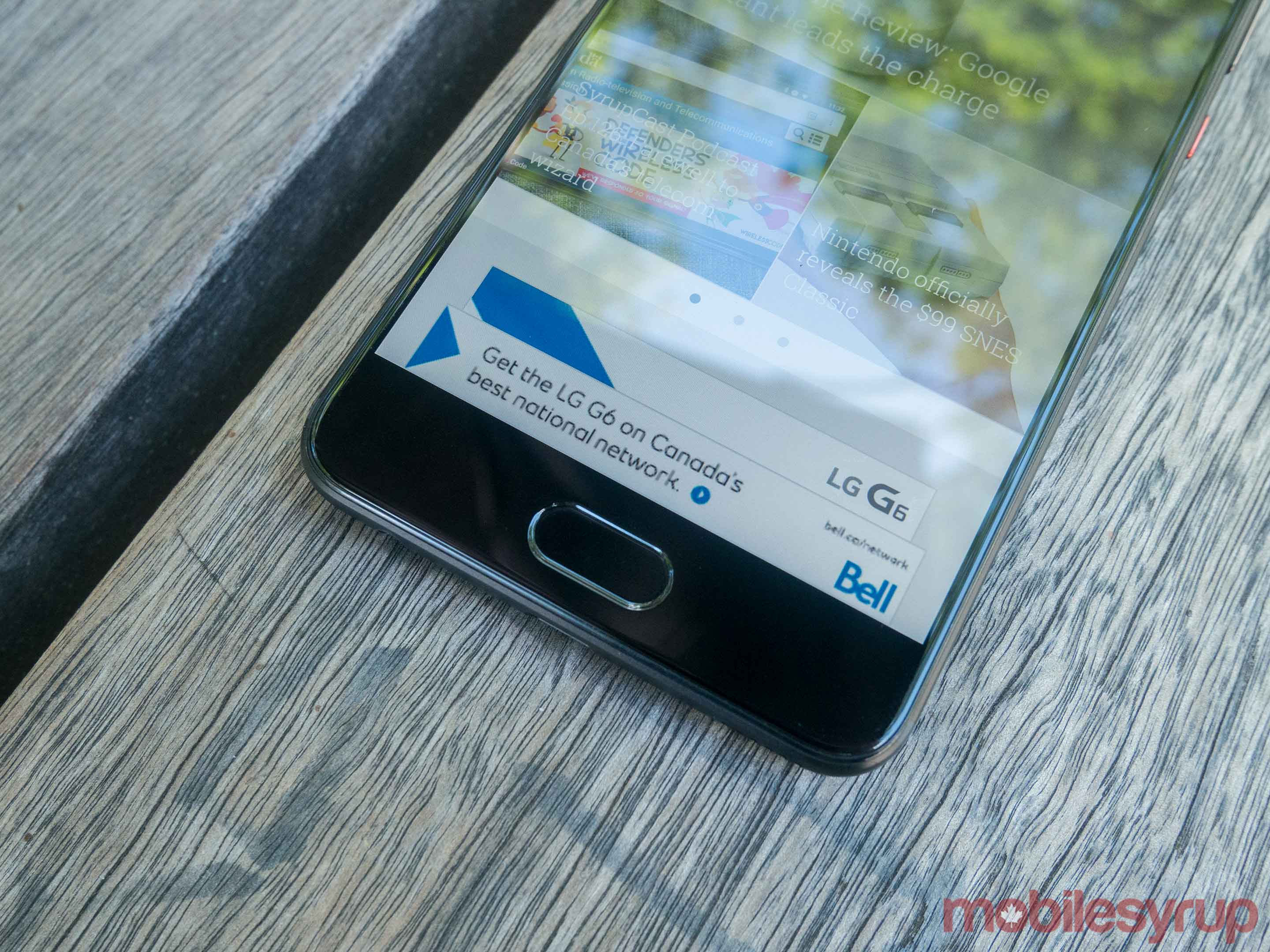
The Pros
- Excellent dual camera
- High-end aluminum design
- Zippy performance
The Cons
- Battery tends to overheat
- Mild bloatware and UI quirks
- No oleophobic coating on display
The arrival of the Huawei P10 Plus and its smaller sibling, the P10, mark the first time a Huawei flagship has made it to Canada, joining the ranks of the Nova Plus and assorted other mid-range and budget Huawei phones that have trickled into Canadian carriers over the past few years.
As such, it marks a big step forward for the 30-year-old Chinese brand, which began in phone switches and has since expanded to cover both the network and device side of telecommunications. Huawei is still in the first stages of making a meaningful entrance to the North American device market, and Canada is the brand’s priority — an unusual role reversal with the U.S.
Huawei executives told MobileSyrup in February that brand recognition in Canada is stronger than the U.S. due to its 5G technology investments in the country, and Canada’s positive reception to the Nexus 6P. Whereas none of the major American carriers stocked the 6P, the Big Three Canadian carriers along with Vidéotron and Freedom Mobile, did stock the device.
Huawei P10 Plus
Huawei P10
Huawei P10 Lite
Display
5.5-inch, WQHD display, 1440 x 2560 pixels, 16:9 aspect ratio
5.1-inch FHD, 2.5D glass, Corning Gorilla Glass 5
5.2-inch 1920 x 1080p FHD LCD screen with high color gamut
Processor
Kirin 960
Kirin 960 (64-bit), Octa-core (4 x 2.4 GHz A73+ 4 x 1.8 GHz A53)
Kirin 658, 16nm Octa-core (4 × 2.1GHz + 4 x 1.7GHz) + i5 co-processor
RAM
4GB of RAM
4GB
3GB RAM
Storage
64GB
32GB
32GB internal storage
Dimensions (in.)
153.5 x 74.2 x 6.98 mm
145.3 x 69.3 x 7 mm
146.5 x 72 x 7.2mm
Weight
165g
145g
146g
Rear Facing Camera
20-megapixel + 12-megapixel (OIS)
Leica Dual-Camera 2.0 20MP monochrome & 12MP RGB, SUMMARIT-H F/2.2, OIS
12MP, 1/2.8 inch sensor and 1.25 µm single pixel
Front Facing Camera
8-megapixel (f/1.9)
Leica 8MP, F/1.9
8MP
OS
Android 7.0 Nougat
Android 7.0
Android 7.0 Nougat
Battery
3,750mAh
3,200 mAh with Huawei SuperCharge
3,000mAh with 18W fast charge
Network Connectivity
GSM/HSPA/LTE
Works with all Canadian carrier networks, Wi-Fi 802.11 a/b/g/n/ac, Bluetooth v4.2, GPS, NFC
GSM/ HSPA / LTE
Sensors
Accelerometer, gyro, proximity, compass
Accelerometer, gyro, proximity, compass
Fingerprint sensor, Gravity sensor, Optical sensor, Distance sensor, Gyroscope Compass
SIM Type
nano SIM
nano SIM
Nano SIM
Launch Date
February 26, 2017
February 26, 2017
March 20, 2017
Misc
Colours: black | USB Type-C, not water resistant, NFC. is available through Canadian carriers.
USB Type-C, not water resistant, NFC. Colours: Black and Prestige Gold colours are available through Canadian carriers.
Bluetooth 4.1
Display
Huawei P10 Plus
5.5-inch, WQHD display, 1440 x 2560 pixels, 16:9 aspect ratio
Huawei P10
5.1-inch FHD, 2.5D glass, Corning Gorilla Glass 5
Huawei P10 Lite
5.2-inch 1920 x 1080p FHD LCD screen with high color gamut
Processor
Huawei P10 Plus
Kirin 960
Huawei P10
Kirin 960 (64-bit), Octa-core (4 x 2.4 GHz A73+ 4 x 1.8 GHz A53)
Huawei P10 Lite
Kirin 658, 16nm Octa-core (4 × 2.1GHz + 4 x 1.7GHz) + i5 co-processor
RAM
Huawei P10 Plus
4GB of RAM
Huawei P10
4GB
Huawei P10 Lite
3GB RAM
Storage
Huawei P10 Plus
64GB
Huawei P10
32GB
Huawei P10 Lite
32GB internal storage
Dimensions (in.)
Huawei P10 Plus
153.5 x 74.2 x 6.98 mm
Huawei P10
145.3 x 69.3 x 7 mm
Huawei P10 Lite
146.5 x 72 x 7.2mm
Weight
Huawei P10 Plus
165g
Huawei P10
145g
Huawei P10 Lite
146g
Rear Facing Camera
Huawei P10 Plus
20-megapixel + 12-megapixel (OIS)
Huawei P10
Leica Dual-Camera 2.0 20MP monochrome & 12MP RGB, SUMMARIT-H F/2.2, OIS
Huawei P10 Lite
12MP, 1/2.8 inch sensor and 1.25 µm single pixel
Front Facing Camera
Huawei P10 Plus
8-megapixel (f/1.9)
Huawei P10
Leica 8MP, F/1.9
Huawei P10 Lite
8MP
OS
Huawei P10 Plus
Android 7.0 Nougat
Huawei P10
Android 7.0
Huawei P10 Lite
Android 7.0 Nougat
Battery
Huawei P10 Plus
3,750mAh
Huawei P10
3,200 mAh with Huawei SuperCharge
Huawei P10 Lite
3,000mAh with 18W fast charge
Network Connectivity
Huawei P10 Plus
GSM/HSPA/LTE
Huawei P10
Works with all Canadian carrier networks, Wi-Fi 802.11 a/b/g/n/ac, Bluetooth v4.2, GPS, NFC
Huawei P10 Lite
GSM/ HSPA / LTE
Sensors
Huawei P10 Plus
Accelerometer, gyro, proximity, compass
Huawei P10
Accelerometer, gyro, proximity, compass
Huawei P10 Lite
Fingerprint sensor, Gravity sensor, Optical sensor, Distance sensor, Gyroscope Compass
SIM Type
Huawei P10 Plus
nano SIM
Huawei P10
nano SIM
Huawei P10 Lite
Nano SIM
Launch Date
Huawei P10 Plus
February 26, 2017
Huawei P10
February 26, 2017
Huawei P10 Lite
March 20, 2017
Misc
Huawei P10 Plus
Colours: black | USB Type-C, not water resistant, NFC. is available through Canadian carriers.
Huawei P10
USB Type-C, not water resistant, NFC. Colours: Black and Prestige Gold colours are available through Canadian carriers.
Huawei P10 Lite
Bluetooth 4.1
With that foothold, Huawei is debuting the P10 and P10 Plus — and even the P10 Lite — in Canada through Bell, Rogers, Fido and Vidéotron, with the P10 coming in around $650 outright, and the P10 Plus set at about $750 outright.
After spending approximately three and a half weeks with the larger of Canada’s newest carrier-stocked flagships, I’ve found it offers a premium experience that easily contends with high-end Android handsets like the Google Pixel and LG G6 — particularly when it comes to camera — but is not without some small eccentricities.
Handsome and familiar aluminum design

The Huawei P10 Plus is an attractive phone, but you’ll no doubt have the feeling you’ve seen it before. It appears to be modelled, like many Android smartphones, after the iPhone.
The P10 Plus has the same matte metal back, the same rounded corners, the same general camera placement, a similarly placed minimal rear logo, a front-facing fingerprint sensor and antenna bands — albeit less intrusive than on the iPhone.
This may be unoriginal, but that isn’t necessarily a trait that I rank highly when it comes to smartphone design. More important to me are quality materials put together in an aesthetically pleasing and logical manner. The P10 Plus succeeds on that front. It has a high-quality, sleek look and everything is within comfortable reach, though the large size does often make two-handed use a necessity in my small hands.
Additionally, the P10 Plus features one small but elegant point of differentiation: a red-edged home button that glints in the light. Above that is the volume rocker, at the bottom edge of the phone is a USB-C charging port, 3.5mm headphone jack and a speaker grille (which can be easily covered during one-handed use, unfortunately).
In comparison to other leading flagships, the P10 Plus is 74.2mm wide, less than the iPhone 7 Plus and Google Pixel XL, but wider than the Samsung Galaxy S8+ and LG G6, which both adopted an elongated form to add more display while remaining easy to hold.
It’s thinner, however, than the above-mentioned competitors and at the light end when it comes to weight – at 165 grams, it’s heavier than the G6, but lighter than the Google Pixel XL, Samsung Galaxy S8+ and the iPhone 7 Plus.
One of the eccentricities that I’d prefer to do without is the P10 Plus’ home button options. Users can choose one of two options: have virtual home buttons take up space on the display while the fingerprint sensor is dedicated solely to unlocking the device, or use the fingerprint sensor as all three buttons through gestures — long tap for home, quick tap for back, swipe for app list.
For efficiency’s sake, I opted for the built-in fingerprint sensor gestures, but the reality does not live up to its potential. The swipe action for opening the app list is commonly read as a quick tap for going back a step. In fact, the swipe was so untrustworthy that I began avoiding it unless I was outside of an app.
This is far from a major issue, but seems mildly ill-conceived from a user experience standpoint.
Protected display

The 5.5-inch WQHD display is surrounded by extremely slim bezels and a mid-sized chin and forehead. Standing alone, it’s a bright screen with crisp definition that does well in direct sunlight. Paired against a Samsung Galaxy S8, it is quite literally outshone — though that’s not surprising, considering Samsung’s long-standing display prowess — while beside a Google Pixel, the P10 offered a much cooler colour palette and seemingly brighter whites.
All told, the P10 Plus’ display stands up well individually and is comparable to most of its competitors, but its physical glass protection presented one of the more hilarious quirks of the device. The screen lacks an oleophobic coating — a coating that repels grease. Instead, it comes with a plastic screen protector out of the box.
Because the screen protector scratches quickly, and because I’ll admit I was curious, I took the screen protector off about a week into using the device and immediately tested it against the Pixel, which has an oleophobic coating, after rigorously cleaning both.
After dragging my finger across the Pixel in a smooth action with little trace of grease, I then dragged my finger across the P10 Plus and felt my finger skidding across, leaving a large streak. A day of use later the device sans screen protector looked far greasier than any device I’ve used previously.
But is this a serious issue? Perhaps not, if you were planning to use a screen protector all along — which is a smart purchase for durability and potential resale value. From a business perspective, consumers will likely take the already-applied screen protector as a bonus, not a detractor, especially since many carrier representatives aren’t likely to know about the lack of oleophobic coating.
Dual Leica camera setup that wows

The Huawei P10 Plus is chiefly being sold on the pre-eminence of its dual-camera setup, which is optimized for low-light shooting — while its dual camera competitors, the iPhone 7 Plus and LG G6, use their setups for optical zoom and wide-angle shots, respectively.
Its 20-megapixel black and white sensor allows for the capture of more light and detail, while it’s 12-megapixel sensor with OIS and f/1.8 aperture adds colour. The 20-megapixel B&W shooter can also be used alone to take some stunning monochrome snaps that put pictures with B&W filter overlays to shame.
Additionally, the P10 Plus’ pro camera mode is easy to access with one hand, coming up as a sort of scroll-through dial at the bottom of the screen, and saves photos in RAW for access to more in-depth editing features.
Though far from a professional photographer, my shots did come out bright, with a high level of detail captured. Nighttime shots, too, lived up to the brand’s claims of great low-light shooting. My only slight issues were a tendency towards blown out skies and a lack of colour saturation, especially when compared with the Pixel, which has a stunning capacity for dynamic range with its HDR+ feature.
For a more in-depth look at the shooter by a much better mobile photog than myself, check out MobileSyrup’s Huawei P10 Plus camera review by contributor Teddy Kritsonis here.
Competitive processing that runs a little hot

With the P10 Plus comes a brand of flagship chipset that most Canadians are unlikely to have had any experience with, the octa-core HiSilicon Kirin 960 SoC — four cores clocked at 2.4GHz and four clocked at 1.8GHz speeds. The chipset is backed by 4GB of RAM.
By many accounts the Kirin 960 stacks up well against by what one might call last-generation chips like the Qualcomm Snapdragon 821 (stocked in the Pixel), Exynos 8890, Apple A10 or MediaTek Helio X25 — but third-party tests show it’s generally outpaced by Qualcomm’s latest chipset, the Snapdragon 835, which is featured in the Samsung Galaxy S8.
My own Geekbench and AnTuTu benchmarks came in at the mid to low range, generally considerably way below the Pixel and iPhone 7. As for my day-to-day performance experience, I was generally pleased by its level of consistency and found it could run processing-heavy apps and graphics-heavy games with the requisite speed, no crashes and little overheating.
The one exception to that experience was video chatting, which would tend to overheat my phone as high as about 46 degrees Celsius; unhealthy for the battery and uncomfortable in my hand.
It’s also necessary to note that I used two Huawei P10 Plus’ for this review and that the first (which I was later informed was a pre-production unit) began suffering relatively frequent app crashes and overheating — up to about 47 degrees Celsius — during the second week of use.
Additionally, the battery began running out of juice more quickly than it did at the outset — I’ll go into more detail about below.
he performance on my second device remained steady — no significant app crashes — but in the second week of use, the phone did see another instance of significant overheating and the amount of battery left at the end of each day (which remained very similar in usage and length) kept getting incrementally smaller.
I believe the first Huawei P10 Plus I received was simply defective, but the continued overheating and mild battery issues indicate there may be a software issue to address.
Sizable battery but not quite what expected

The 3,750mAh battery is large in comparison to the Pixel XL’s 3,450mAh battery, the LG G6’s 3,300mAh cell or the S8+’s 3,500mAh unit, and it’s an element that Huawei has emphasized in marketing, but as I’ve mentioned above, it suffered from overheating and didn’t always return the extended life that was promised.
During one long day with my first P10 Plus, the battery lasted from 8am to 4:30am with long periods of standby and average use — several hours music streaming, two to three hours of Wi-Fi and mobile data use and perhaps 30 minutes of calling.
As overheating came to be a bigger issue, however, that same type of use led to about 12 hours of life rather than 20.
With the second device, in the span of a 7am to 11pm day, it began with a worthy approximately 45 percent remaining charge, but after a little over a week, my device would end the device at under 25 percent charge during that same sort of typical 7am to 11pm use case.
Huawei noted that this issue may have something to do with the fact that I was using a Rogers optimized device on Virgin’s network, which could lead to battery drainage during mobile data use.
One other possible issue affecting this is Huawei’s own app management processes featured in its EMUI skin, which overwrites Android Doze. Though Huawei stands behind its strength, it may not yet be well-tailored to North American apps.
Though both of those possibilities are the result of mere guess-work, the fact that the battery issue may be software-related is encouraging, since it allows for the potential of an over-the-air fix.
In the meantime, Huawei says it’s analyzing the battery issue, and we’ll update the review once we get results.
Solid UI experience

EMUI is one of the things users will likely notice first about the device upon activation. Its themes are a bit outdated in style, and the device took a bit of tweaking to approach the stock Android I prefer.
Bloatware, while pared down from previous Huawei devices, was also more prevalent than I would have liked, and there six or so apps that I wanted to delete but could only disable — meaning they’ll no longer appear in the app drawer, but will take up storage space.
Once I had taken steps to customize the device, however, I had no further issues with the user interface.
New phone on the block
Huawei has brought a flagship to Canada that offers a beautiful high-end design and fantastic camera experience at an extremely affordable price for the market.
My only reticence when it comes to recommending the handset is its questionable battery life and tendency to overheat. Apart from that, issues like a lack of oleophobic coating are small and manageable.
If you're a budget-minded Android user looking for a premium phone with a great camera, this handset is for you. If battery and a powerhouse chipset are your main concern, I’d look elsewhere.
"If you're a budget-minded Android user looking for a premium phone with a great camera, this handset is for you. " 7.5/10
MobileSyrup may earn a commission from purchases made via our links, which helps fund the journalism we provide free on our website. These links do not influence our editorial content. Support us here.










